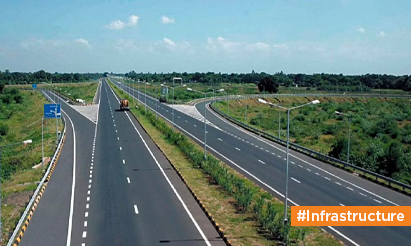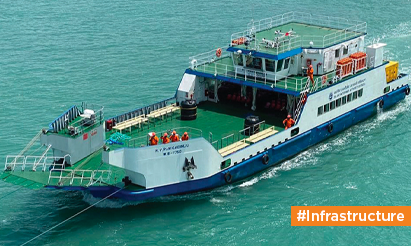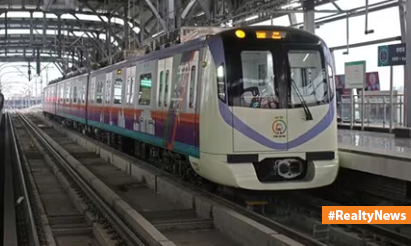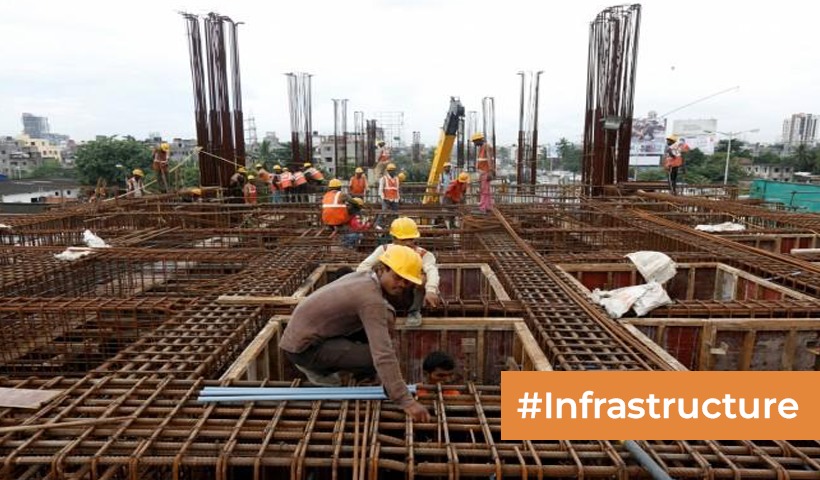All You Need to Know About Dedicated Freight Corridors and Their Impact on the Logistics and Real Estate Industry!
A dedicated freight corridor (DFC) is a specialized railway track designed for exclusive use by freight trains, separate from the tracks used by passenger trains. These corridors are meant to improve the efficiency and speed of freight transportation by reducing congestion and allowing for higher-speed, longer and heavier trains that can carry more cargo.
DFCs are typically built with modern technology and infrastructure, including high-capacity signaling systems, electrification, and dedicated freight terminals for loading and unloading cargo. This allows for faster and more reliable transportation of goods across the country, reducing transit times and lowering logistics costs.
In India, for example, the government has been working on constructing the Dedicated Freight Corridor (DFC) project, which aims to create two dedicated freight corridors along the eastern and western parts of the country. Once completed, these corridors will connect major industrial hubs and ports, allowing for faster and more efficient transportation of goods.
India is one of the world’s fastest-growing economies, and as a result, the demand for transportation of goods across the country has been increasing rapidly. However, the existing railway infrastructure in the country was not designed to handle the volume and speed of modern freight transportation. This has led to inefficiencies, delays, and increased logistics costs.
To address these challenges, the Indian government launched the Dedicated Freight Corridor (DFC) project in 2006, which aims to create two dedicated freight corridors along the eastern and western parts of the country. These corridors will span a distance of over 3300 kilometers and connect major industrial hubs and ports.
The need for DFCs in India arises from several factors, including:
- Increasing demand for freight transportation: As India’s economy continues to grow, the demand for the transportation of goods is expected to increase significantly. The DFCs will provide a dedicated, high-capacity network for freight transportation, ensuring efficient and timely delivery of goods.
- Congestion on existing rail networks: The existing rail network in India is heavily congested, leading to delays and higher logistics costs. The DFCs will provide a dedicated, congestion-free network for freight transportation, reducing transit times and logistics costs.
- Modernization of railway infrastructure: The DFCs are being built with modern technology and infrastructure, including high-capacity signaling systems, electrification, and dedicated freight terminals. This will bring the Indian railway infrastructure on par with global standards and improve the efficiency and safety of freight transportation.
- Support for economic growth: The DFCs are expected to support India’s economic growth by providing a reliable and efficient network for the transportation of goods, encouraging investment in industries and creating job opportunities.
In summary, the need for DFCs in India arises from the increasing demand for freight transportation, congestion on existing rail networks, the need for modernization of railway infrastructure, and support for economic growth.
The construction of Dedicated Freight Corridors (DFCs) can have a significant impact on real estate in the surrounding areas. Here are some of the ways in which DFCs can affect the real estate market:
- Increase in property values: The construction of DFCs can lead to an increase in property values in the surrounding areas. This is because the improved connectivity and accessibility provided by the DFCs can make these areas more attractive to businesses, investors, and residents.
- Boost in industrial development: DFCs are designed to connect major industrial hubs, ports, and logistics parks. As a result, the areas surrounding DFCs may see an increase in industrial development, which can lead to the creation of new jobs and an increase in demand for commercial and industrial real estate.
- Development of logistics parks and warehousing facilities: DFCs often lead to the development of logistics parks and warehousing facilities in the surrounding areas. These facilities can be used for storage, distribution, and transportation of goods, and can lead to an increase in demand for industrial real estate.
- Improved infrastructure: The construction of DFCs often involves the development of new infrastructure, such as roads, bridges, and interchanges. This can improve connectivity and accessibility in the surrounding areas, making them more attractive to real estate developers and investors.
- Increased demand for housing: The construction of DFCs can lead to an increase in demand for housing in the surrounding areas, as the improved connectivity and accessibility can make these areas more attractive to residents. This can lead to an increase in demand for residential real estate.
Overall, the impact of DFCs on real estate can be positive, leading to an increase in property values, industrial development, logistics parks and warehousing facilities, improved infrastructure, and increased demand for housing. However, it is important to note that the impact of DFCs on real estate can vary depending on the specific location and market conditions.
Disclaimer: The views expressed above are for informational purposes only based on industry reports and related news stories. PropertyPistol does not guarantee the accuracy, completeness, or reliability of the information and shall not be held responsible for any action taken based on the published information.




